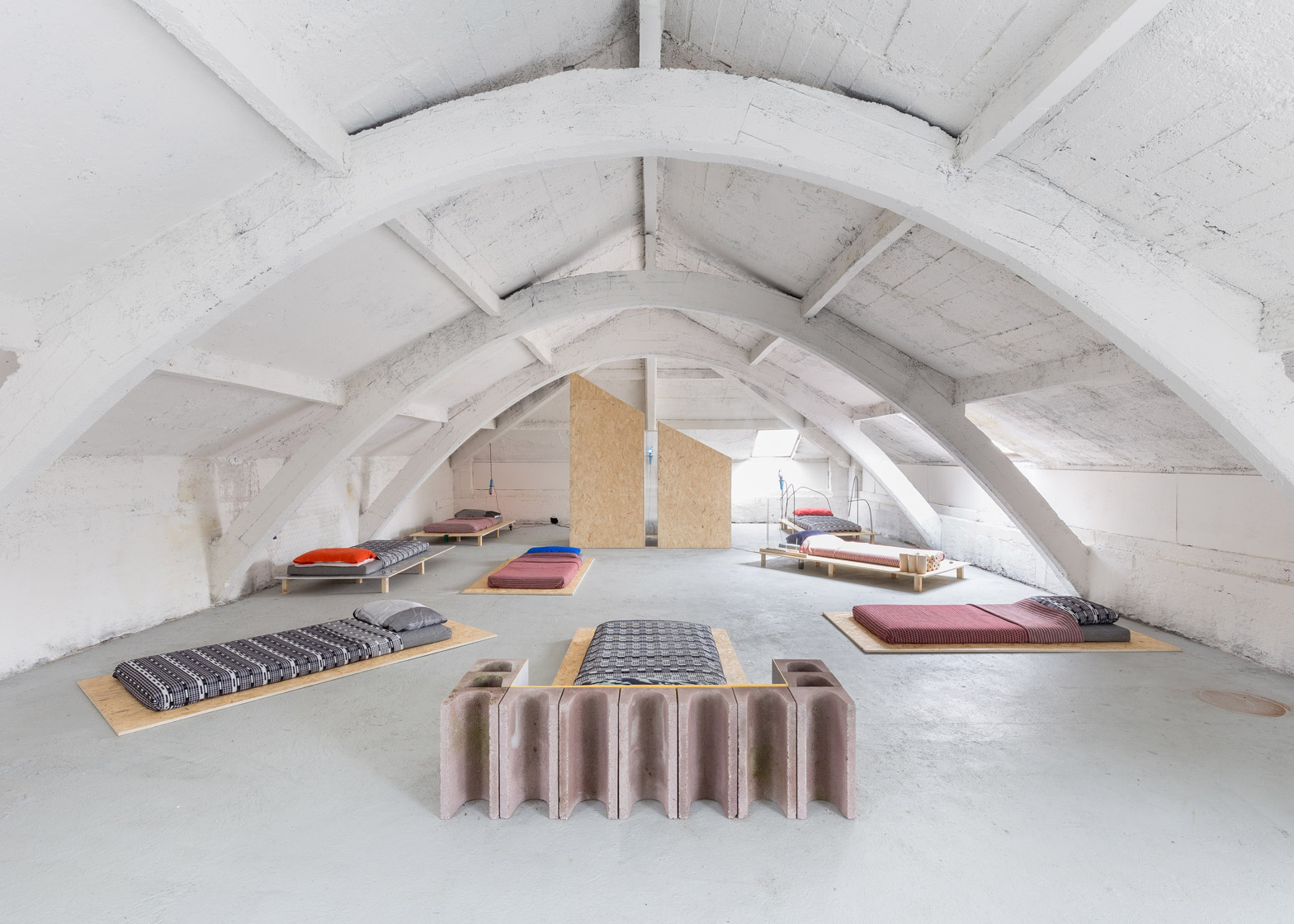Milan 2016: as this year's Milan design week gets underway, we've selected our top picks from what's on around the city.
Our ten highlights of Milan design week 2016, which officially kicks off tomorrow, include a pavilion based on a typical African village, an installation created using only beams of light and a temporary self-contained community housed in a squat.
Throughout the week we'll be posting images on Instagram using #milanogram2016 and are encouraging others to do the same! Our team will choose the best photo at the end of the week and give a watch to whoever took it – find out more here.
Take a look too at our trend predictions for Milan design week 2016, which include design for children, products for compact living and solutions for the refugee crisis.
Here's our guide to 10 unmissable exhibitions and installations to check out whilst in Milan:
ECAL – When Objects Dream
Media and Interaction Design students from Swiss university ECAL are presenting a series of interactive experiments that explore ideas surrounding virtual reality and connected products, for an exhibition titled When Objects Dream.
Spazio Orso 16, Via dell'Orso 16
COS x Sou Fujimoto – Forest of Light
Following collaborations with Nendo and Snarkitecture, fashion brand COS has teamed up with Sou Fujimoto to create its installation in Milan this year. The Japanese architect will use only spotlights rather than physical objects to create an interactive setting inside a former theatre. Find out more about the Forest of Light and watch Fujimoto explain the concept »
Cinema Arti, Via Mascagni Pietro 8
Caesarstone x Tom Dixon – The Restaurant
British designer Tom Dixon is continuing his partnership with Caesarstone, using the brand's composite quartz material to create four monumental kitchens inside the historic Rotonda della Besana. Food by experimental Italian studio Arabeschi di Latte will be served at The Restaurant, where Dixon will also present his latest collection of products called Materiality. See Tom Dixon's designs launching in Milan and find out more about his collaboration with Caesarstone »
Rotonda della Besana, Via Enrico Besana 12
Lee Broom – Salone del Automobile
To show off his new 1990s-inspired lighting, British designer Lee Broom has decked out the back of a van that he is driving all the way from London to Milan. His mobile presentation space – decorated to look like part of an Italian palazzo – will be touring the city throughout the week. More information about Lee Broom's Salone del Automobile »
Structure, Norwegian Contemporary Crafts and Design
Homeware and furniture from a range of Norwegian designers including Andreas Engesvik and Lars Beller Fjetland will be on display at the Structure exhibition. Expect a plethora of pared-back Scandinavian products in a selection of warm materials and soft colours. Find out more about the Structure exhibition »
Rooms. Novel Living Concepts
Ideas for redefining habitable spaces by a range of Italian designers including Alessandro Mendini and Fabio Novembre are on show as part of the XXI Triennale di Milano exhibition. The sequence of rooms will include a seating system by architect Carlo Ratti that he claims is the "world's first Internet of Things sofa".
Ilse Crawford and Design Academy Eindhoven – Touch Base
Curated by British designer Ilse Crawford and Design Academy Eindhoven director Thomas Widdershoven, Touch Base focuses on tactility in the digital age. Products and garments made from human hair, a mobile wool processing unit, and objects that disrupt the ritual of hand-washing are among the projects on display.
Laundry House, Via Cletto Arrighi 10
Dirty Art Department – The Wandering School
Amsterdam's Dirty Art Department has taken over a squatted former slaughterhouse in an abandoned Milanese district to create a series of interactive installations that emulate a self-contained community. These include a temporary hotel, daily presentations and a Big Brother-style diary room.
Kéré Architecture – Courtyard Village
The courtyard of the Baroque-style Palazzo Litta has been transformed into a "neo-African village" by Berlin-based architect Diébédo Francis Kéré. Swathes of grass surround pavilions made from wood and stone, offering a place for visitors to gather.
Atelier Biagetti – No Sex
Described by Atelier Biagetti as a cross between an "innocent pleasure-house" and a "happy clinic", the studio's No Sex exhibition is designed to emulate a space where people might go to receive treatments or cures to re-establish their sexual equilibrium. Pastel-coloured furniture pieces among clinical curtains and lighting are presided over by attendants in nurse's outfits.

